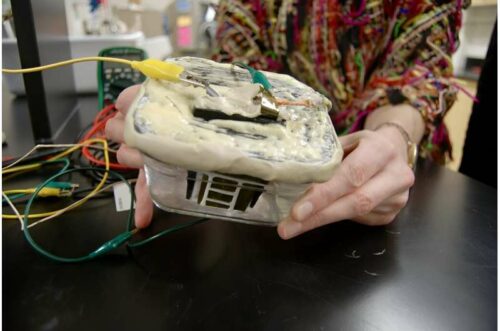Battery tech from the University of Utah charges with temperature changes, potentially powering IoT sensors in remote areas and enhancing efficiency and safety in various applications.

Wirelessly connected devices are increasingly used in various applications, from monitoring engines and machinery to remote sensing in agriculture through the “Internet of Things” (IoT). IoT has significant potential for enhancing equipment efficiency and safety but faces obstacles, particularly in powering devices with unavailable reliable electrical sources.
Researchers from the University of Utah’s College of Engineering have highlighted a potential solution in the form of a new type of battery known as a pyroelectrochemical cell (PEC). Developed and tested in the labs of Roseanne Warren and Shad Roundy, both associate professors of mechanical engineering, this innovative device shows promise for addressing energy storage challenges.
To charge, the device harnesses temperature changes in various environments, such as inside vehicles, aircraft, or underground in agricultural settings. In principle, this technology could enable IoT sensors to operate without frequent recharging, expanding their practicality.
The PEC incorporates a pyroelectric composite material as a separator within an electrochemical cell. This material, comprising porous polyvinylidene fluoride (PVDF) and barium titanate nanoparticles, exhibits altered electrical properties with temperature changes. This effect modulates the polarization of the pyroelectric separator.
Fluctuating temperatures induce an electric field within the cell, facilitating ion movement and enabling energy storage within the cell.
The team conducted experiments to validate their predictions, specifically examining the orientation effect and testing the differences between heating and cooling effects.
The cell exhibited the expected response in the experiments, but its real-world viability remains. Warren’s next focus is on testing the cell outside the lab. One of her students is currently engaged in circuit modelling to develop and enhance the cell’s performance.
The cell could generate up to 100 microjoules per square centimetre from a single temperature cycle. While this amount of energy may seem small, the research suggests it could be sufficient for various IoT applications.
Reference: Tim Kowalchik et al, Direct conversion of thermal energy to stored electrochemical energy via a self-charging pyroelectrochemical cell, Energy & Environmental Science (2024). DOI: 10.1039/D3EE03497F






